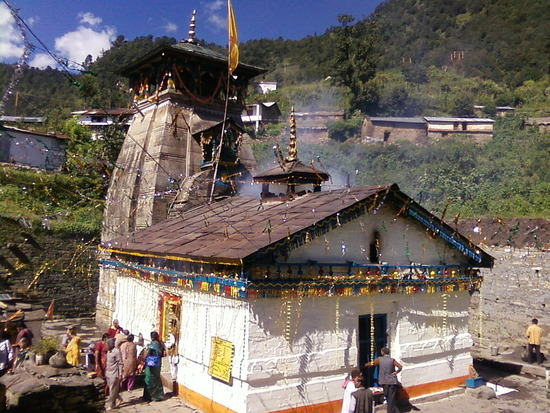Kusalavapureeshwarar or Kurungaleeshwarar Temple is the Temple located in Koyambedu near the Koyambedu main metro station, Poonamalle High road and CMBT Bus Stand.
It is the Temple where the first Pradosham Utsavam took place. Pradosham is the time when Lord Shiva dances in between the horns of Nandhi Deva. Every day evening 4:30 to 6:30 pm is called Nithya Pradosham and the Tryodashi day which 13th day from Pournami/Amavasai (Full Moon/New Moon) is called Paksha Pradosham. If Pradosham coincides with a Saturday, it si called Sani Pradosham and is considered very auspicious.
Sthala Puranam
During the Samudra Mathanam or churning of the Parkadal or Milky ocean, Alahala visham/Halahala poison emerged which frightened the Devas. Devas approached Lord Shiva and Nandhi Deva brought the Alahala visham to Lord Shiva. Lord Shiva Drank the posion and saved the worlds from destruction. Parvathy devi through her pathivratha shakthi touched the neck/kanta of Lord Shiva and arrested the poison there. Hence Lord Shiva is known as Neelakanta.
Nandhi Deva became proud and Haughty that he had brought the Poison to Lord Shiva and it did not affect him. This sin of Nandhi deva made him mad and he started laughing wildly like a mentally affected person.
Parvathy devi took pity on him and brought him to Koyambedu and pulled the Mookan kayiru or rope that is tied around the Nandhi/Bull through her leg. Hence Parvathy devi known as Dharmasamvardhini here is seen with one leg brought forward here. Lord Shiva danced in between the horns of Nandhi deva during Pradosha kalam and the world's first Pradosham was celebrated in this temple. Hence Pradosham Utsavam celebrated here is equivalent to 1000 Pradoshams celebrated in any other Temple.
Agasthiar Vijayam Spiritual Magazine has brought out the other intricacies and benefits of Pradosha Kaalam in a Book on Pradosham and also in their Website Link below,
In Tretha Yuga when pregnant Sita Devi was sent to forest by Rama, she resided in Valmiki Ashram in this premises and Lava and Kusa the sons of Lord Rama were born and brought up here. Lava and Kusa worshipped Lord Shiva here, hence the main deity is known as Kusalavapureeshwara. Vanadurga kali devi worshipped Lord Shiva here and hence he is also known as Kurunkaleeswarar. There is a separate temple for Vanadurga devi nearby also. Lord Vishnu gave Darshan as Vaikunta Vasa kolam and hence he is known as Vaikunta Vasa Perumal in a separate temple nearby.
Kurukaleeswarar and Dharmasamvardhini Devi Sannidhi






















